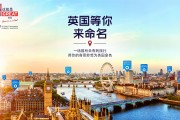Welcome to the second installment of our series of interviews that seeks to gain insight into the Chinese Advertising Industry. You will recall the last interviewee was with Clancy Dalebout a former Creative Director. Today we are going to hear from someone who has a, ‘Planning’ role in an agency – Pete Heskett.
Pete currently works as the Regional Planning Director for South-East Asia at JWT, the fourth largest advertising agency in the world. He has over 17 years experience in marketing communications across both research and advertising.
He has previously worked at a number of other big ad agencies including BBH, TBWA, and Lowe with experience working on Johnnie Walker, Fedex, Lux, the Apple iPod launch campaign, Axe, John Smith’s (the original Peter Kay campaign) and Mercedes-Benz.
Our interviewee is also a blogger for the popular ad industry magazine, ‘Campaign’. And if that wasn’t enough background info, Pete will also be speaking at the ‘Knowledge of Design Week‘ (KODW) in June where he will be discussing the issues around Chinese brands heading west.
Q1. Hi Pete, to kick-off can you give us a summary of what brought you to SE Asia, and how long you worked in China?
I worked in China for three years at BBH where I was Head of Planning and part of he management team that started the BBH office there – I was ’employee 7′ in Shanghai, but being British of course I liked to think of this ’employee 007′.
I then joined JWT in my current role which I have down for nearly three years. Essentially I lead Planning for JWT for SEAsia looking after six offices there plus our operations in Pakistan. Also I work on two of our Global clients whose brands are led out of Asia – Lux and Radiant, both Unilever brands.
I am based in the Singapore office but I am more often on a plane traveling. Through work on Lux I have continued to have a hand in thinking and creative work for the China market although this is obviously not such an intensive focus in the China market as I had when at BBH because there are a lot of other markets I now get involved in too.
Q2. For those who don’t work in advertising, please can you explain what a planner does and more specifically what your current role at JWT entails?
My Mum is still looking for a decent answer to this question of what a Planner does! At its simplest it is about the notion that putting some thought into the most effective way to create communication before you actually do it is a good idea.
That is a good simple explanation, however Planning is not just what happens before you create communication as it has a role all the way through the process. A more detailed explanation would be that a Planner’s role is:
- part consultant to the client on the strategy for how communication can help their business
- part philosopher about the meaning of the brand in people’s lives
- part psychologist on how people relate to brands, media, comms and culture
- part trendspotter on all of the above
- part simplifier of all of the above into clear and inspiring ideas to kickstart the creative process
- part analyst of the performance of the communication and it’s effectiveness in achieving it’s objectives
You can see why it has been hard to communicate that to my mother….
Q3. JWT is a large global advertising agency with offices around the world, to what extent does JWT (and the campaigns it creates), tailor itself to China and its consumers?
The best communication tends to be created by people who are both super local and super global. If you don’t have a very well informed understanding of a culture then you can quite easily miss the mark. However, if you are not in touch with what is happening outside of your culture you can often become a bit dinosaur in your approach to communications as it is an industry that evolves fast and often your home culture is not the first to develop new ideas.
HSBC illustrating the importance of local knowledge (Watch on Tudou)
At JWT we like to encourage our people to develop both of these sides to their game and creating opportunities for ties to be stronger and more connected between people in different JWT offices across the world is a fundamental part of our strategy for the future. We believe that people who are great ‘Internationalists’ as well as great ‘Localists’ will be the creative leaders of the future.
So, to answer your question directly, we tailor our work hugely to China. However, it is enriched by connections, ideas and transferable processes and behaviours from outside.
Q4. Are Chinese consumers complex beings? How do they differ from their Western counterparts?
My good Lord – what a question! Easily the subject of a book or three!
Chinese people are just as complex and different as Western people – of course they are just as human as everyone else in the world in being complex and often contradictory!
Having said that Chinese people share a lot of human truths with everyone else who bleeds red on the planet. Herein lies great opportunities for brands – Johnie Walker can bring ‘Keep Walking‘ to China because young Chinese men are just as interested in progressing in life as young men elsewhere in the world. Nike can talk about ‘Just Do It‘ in China because Chinese people are just as motivated towards sporting achievement as anyone else on the planet. In saying that, those aforementioned brands have done great work in China by harnessing specifically rich local cultural insights to tailor their campaigns to China.
Yet when I first arrived in China, and feeling insecure with my lack of knowledge of the culture, I obviously used to talk often to colleagues and friends about what their take was on China. What beguiled me most was that the responses from Chinese people themselves were often so wildly different on subjects – for a culture which had such a dynamic effort towards homogenisation it is still an incredibly diverse culture, something that has been accentuated by a pace of change that creates huge attitudinal gaps between people born often only a few years apart. My favourite quote on this is the author Rob Gifford who says that, “In China everything and nothing is true, often at the same time“.
Q5. What are Chinese business and consumer attitudes towards advertising?
There are two very different points here, as business attitudes and consumer attitudes are two very different things.
Business attitudes
Generally my experience would lead me to be fairly critical of Chinese business attitudes towards advertising. It is treated very crudely and I think that many marketeers in China fundamentally don’t really embrace the basic truth of the first rule of communication, which is to stand out by building a differentiated brand.
There is a lot of ‘follow the leader‘ style copying. You can understand this because if you are a Chinese organisation trying to build a world class organisation then taking cues from the world leaders on how you develop yours is very sensible. However, this is where marketing is very different. By all means take learnings from the marketing models of the leaders, but if you copy them then you end up reinforcing the reasons for people to buy the leading brands rather than your own. Learning from how Nike structures its organisation and uses marketing and design is sensible. Copying the swoosh and having a campaign idea which is very close to ‘Just do it‘ isn’t.
Something I have noticed too is that actually the high growth rates of China have led to an anti-competitiveness in marketing. Simply by being active in China you can see huge volume growth because the market is growing fast. This means that even if your brand is less competitive and actually losing market share you can deem your strategy a success because revenues and profits will be growing anyway.
There is also a generational problem in China – anybody over 35 is dominated by the values and experience of the Cultural Revolution. These folk didn’t grow up with brands and consumerism as part of their DNA. They grew up ‘not standing out’ and playing life very safe (for very good reasons). Most of the marketing managers over 35 therefore often have little instinctive feel for branding and communication. This period saw a punishment of the rebellious attitudes of creativity, so it is understandable that folk from this generation don’t really get it.
The influence of the Cultural Revolution is felt in ad agencies too. Most of the big creative directors in China are outsiders – Singaporeans, Taiwanese, Hong Kongers, Japanese, or Westerners. Again I think that the natural generation of creative directors who should be coming into their prime for power and influence in their late 30s, early 40s, are just not there. I think over the next ten years we’ll see this generational effect removed but I believe it has had a big impact on the culture of communication in China.
These factors contrive to create the ad breaks you see in between TV shows in China which in general are often a turgid mess of ‘shouty’, undifferentiated, bland and patronising ads. Of course there are exceptions, and there are some wonderful and highly contemporary examples of communication emanating from China, but they are really the exception rather than the norm. A lot more risk taking and using communication as a weapon of advantage rather than a blanket of security is badly needed. Generally there is a distrust of the creative urge in China which is holding it back.
Consumer Attitudes
From a consumer perspective, Chinese attitudes towards advertising are also very interesting. One of the biggest things that clients and agencies are struggling with currently is the diversity between regions and between generations. Creating communication which communicates equally well across the whole of China is very challenging.
You have a large group of generally older and less affluent people to whom very rational communication does well as it reassures them of your sincerity (even if the claims of manufacturers are often somewhat lacking in this). You then have a group who are making the shift into greater affluence, they are seeing huge lifestyle changes and thus lifestyle imagery tends to be fairly effective. Then there is a group (younger and more affluent) who aren’t easily convinced by simple lifestyle or faux-scientific claims, so your communications need to surprise and entertain.
IBM’s ‘surprising and entertaining’ viral campaign
One of the solutions to this is to be more focused in your communication targeting and objectives. Being clearer about the bullseye that you are after can help to develop more effective work given how tough it is to try and please all people all the time.
Another big difference in communicating to audiences in China is the generally lower cynicism towards brands and communication compared to what you see in the West. We run a study looking at this and have very clear data that alongside other emerging economies that are really booming right now like India or Brazil, Chinese are real enthusiasts for brands. They are far more willing to engage with brands, and get more out of doing this.
One big trend in the West to overcome cynicism towards traditional marketing has been to focus more on adding ‘utility’. Giving the audience valuable experiences or focusing on doing some societal good (CSR) are seen as ways to get messages across without making audiences feel ‘advertised at’. This is now being used as a cure for the ineffectiveness of some of the old ways.
What I find both exciting and extremely frustrating is that these strategies are actually doubly effective in emerging economies. These are not just sophisticated techniques for sophisticated consumers – they are basically a more human, humane, and a fairer way of marketing. Using these techniques in developing economies has no cynicism to overcome, but crucially it doesn’t have the byproduct of some of the more basic methods of communication in creating cynicism. Because it is easy to stick to just keep throwing 30 second TV commercials at the audience, a complacency can set in that will eventually lead to greater cynicism towards brands and their marketing. For me Asia is killing its Golden Goose and failing to use its ‘late-mover advantage’ by learning from the mistakes of the West. My frustration is that I don’t really feel like anyone is listening to me on this!
Q6. Chinese marketing managers are extremely demanding, they want to develop strong brands in short amounts of time. How does JWT handle these high expectations?
Given I am not doing a huge amount of work in China currently this is a hard one to answer. However, it goes without saying that we do our very best to exceed the high expectations of our clients whenever possible.
Q7. What are your thoughts on Ogilvy’s recently launched “China Practice“? Will JWT being following suit with a similar dedicated unit for Chinese brands looking to go global?
Despite being WPP bedfellows the question you are asking is one of competitive strategy and hence I will need to give you a polite ‘no comment’ on this one. However, on a personal basis I think that this development from Ogilvy is an interesting one.
Q8. What do you think Chinese brands need to do to succeed in the West? What do you think Western brands need to do to be successful in China?
Again, two huge questions worthy of books in their own right!
Chinese brands – Journey to the West.
I think this comes back to my previous point of using marketing as a weapon for competitive advantage. Just being big is not going to be enough to win. You can see the Chinese government has tried to advertise itself creating rather propaganda style ads, content and investing highly on media spend to convince Westerners it is a great place. I don’t know what their tracking research is saying, but I would bet that this has been not the most effective use of the funds available.
To succeed in the West, Chinese brands are going to need to come to terms with their ‘Chineseness’ and what people in the West think of this. Ultimately they will need to make Chinese values aspirational in the same way that Coke, Nike or McDonald’s have made American values aspirational and the luxury brands do with their various countries of origin.
Li-Ning’s breakthrough commercial for the US market (Watch on Youku)
Li-Ning has been interesting on this with the ads its done in the US recently (above) – essentially using self-deprecating humour and poking fun at the prejudice that Americans have towards anything which is ‘Made In China’. If other brands can be smart, humble, and cool like Li-Ning has done the US, then they will succeed in the West. If they smell at all of Chinese nationalism, a desire to takeover the world, or a cruel approach to human rights then they won’t succeed in the West as these are aspects of China that Westerners don’t sign up for.
Western brands succeeding in China.
I think these again comes back to a theme I mentioned before – bringing something valuable from outside as well as bringing that to life in an exceptionally locally relevant way. Western brands represent aspirational values very often in China. I worked on Johnnie Walker whilst at BBH and our ‘Keep Walking‘ work was a great example of this. We created a campaign called ‘The Pact‘ which was richly awarded both at creative awards and effectiveness awards.
Johnnie Walker’s ‘Keep Walking’ campaign – ‘The Pact’
The success of this was on fusing what ‘Keep Walking‘ is all about – progressing life, persistence, not giving up on your dreams with a very Chinese insights. We took our inspiration from Hong Kong gangster movies which are all about the values of brotherhood – ‘Jie Bai Xiong Di’. Brothers progress with the help of each other. And their sealing of these bonds of brotherhood often happen through ‘pacts’ sealed with alcohol. Bingo!
Hence the idea became about the pacts that you make to progress with your friends – ‘Keep Walking‘ becoming the toast you use to seal these pacts. It’s ultimately very different from how Johnnie Walker communicates in the West but it delivers the same payload of meaning for ‘Keep Walking’. This is really what successful global brands should do – deliver the same core idea everywhere but be smart about how they tailor this to the audience.
Q9. The Chinese Government is keen to promote Chinese values and quash Westernization of the country, what effect, if any, does this have on advertising to Mainland consumers?
The language of this is all wrong really isn’t it. ‘Quashing Western values’ is dumb – we live in a global world where information manages to travel pretty freely. Travel between nations is increasing. You can’t stop people reflecting on the differences in other places and often wanting to use what they learn on their real or virtual travels in their lives back home.
What I would have some sympathy with the Chinese government is learning from some of the mistakes of the West. I think that a lot of our values have become fairly corrupt and providing an alternative path for Chinese, and the rest of the world, to follow would be a brilliant thing to do. However, if you are going to aggressively ‘quash’ and not provide an alternative to aspire to then ultimately you are going to shoot yourself in the foot. This kind of behaviour will get what it deserves sooner or later because people are neither stupid nor or do they forget. Maybe the Chinese government needs to start thinking of themselves as a consumer brand and start to build perceptions according to some of the rules of engagement of this field. I can’t thing of many brands that behave like thugs and succeed.
I can’t comment too expertly on what effect this has on advertising to Chinese people as to be honest I haven’t been involved in any discussions over communication when anyone pipes up in a meeting ‘but this is too Western and the government won’t like that so we shan’t do it’.
Q10. Finally, as with all interviewees, can you tell us what is your favourite Chinese ad campaign of late?
Forgive me for being a company man, but I would have to say our Nokia campaign to launch the limited edition N96 created by Polly Chu in our Beijing office. It is creatively extremely cool – ‘is it real or not’? And also uses my favourite Chinese of all time Bruce Lee. It is all the things modern communication should be – it adds something to the world and your life by existing and it is worth having a conversation about. It also differentiates a Nokia extremely positively from an iPhone – which these days is not an easy task at all.
Nokia N96 Bruce Lee Limited Edition: Game of death (Watch on Tudou)
Thank you Pete and Xiè Xiè
We’ll have more first-hand thoughts and opinions from inside the Great Wall very soon. In the meantime if you want to hear from Pete you can follow him on Twitter @hungrryghost.












